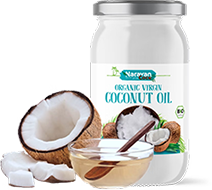Ginseng – The Root of Vitality
Scientific Name: Panax ginseng (Asian Ginseng), Panax quinquefolius (American Ginseng)
Common Names: Ginseng, Asian Ginseng, American Ginseng, Korean Ginseng, Chinese Ginseng
Family: Araliaceae
Overview
Ginseng is a slow-growing perennial plant revered across the globe for its powerful medicinal properties and adaptogenic qualities. Known as a natural tonic, Ginseng has been used for thousands of years in Traditional Chinese Medicine (TCM), where it is considered a symbol of strength, resilience, and longevity.
The term “Panax” is derived from the Greek word meaning “all-healing,” and rightly so—ginseng is believed to help the body restore balance and enhance vitality, especially under stress.
Botanical Description
- Plant Type: Perennial herb
- Root: Thick, light-colored, fleshy root resembling the shape of a human body
- Leaves: Palmately compound with 3–5 leaflets
- Flowers: Small, greenish-white and inconspicuous, borne in umbels
- Fruit: Bright red berries (not used medicinally)
- Growth Time: Typically harvested after 4 to 6 years
Medicinal Properties
Ginseng is best known as an adaptogen—a natural substance that helps the body adapt to physical and mental stress. Its health benefits are largely attributed to a group of compounds called ginsenosides or panaxosides, which influence energy, immunity, and the nervous system.
Key Medicinal Uses:
- Energy & Stamina: Boosts physical and mental energy; fights fatigue.
- Immune Support: Enhances immune cell activity and illness resistance.
- Cognitive Function: Improves memory, focus, and mental clarity.
- Stress Relief: Helps regulate stress response and emotional balance.
- Blood Sugar Control: May help manage glucose levels in type 2 diabetes.
- Anti-inflammatory & Antioxidant: Protects cells from damage and inflammation.
⚠️ Note: While ginseng is generally safe when used appropriately, overuse may cause insomnia, headaches, or digestive upset. Always consult a professional before use.
Types of Ginseng
- Panax Ginseng (Asian/Korean): Warming and invigorating; used for stamina and vitality.
- Panax Quinquefolius (American): Cooling and calming; used for stress and inflammation.
- Siberian Ginseng: Not a true ginseng botanically but often used as an adaptogen.
Cultivation & Growing Conditions
Ginseng thrives in cool, shaded woodland settings and is cultivated with great care due to its slow growth and premium value.
Growing Requirements:
- Climate: Cool temperate zones; shaded woodland environments.
- Soil: Moist, well-drained, loamy and rich in organic matter; slightly acidic (pH 5.5–6.5).
- Light: Grows best under 70–80% shade.
- Watering: Requires consistent moisture; avoid waterlogging.
- Propagation: Grown from seed with a long dormancy period.
Role in Organic & Sustainable Farming
Ginseng is ideal for forest farming and sustainable agriculture. It:
- Supports biodiversity and ecosystem health in shaded woodland environments.
- Can be grown without synthetic chemicals, promoting clean, organic production.
- Generates high economic value for small-scale organic farmers.
Economic and Cultural Importance
- Global Demand: Ginseng is a key herbal product in global wellness markets.
- Cultural Significance: Highly valued in traditional Chinese, Korean, and Native American medicine.
- Export Crop: American ginseng is a prized export, especially to Asia.
Conclusion
Ginseng is a powerful and respected herb with deep roots in natural healing traditions and a promising role in modern health. Its cultivation not only supports vitality and wellness but also contributes to sustainable, eco-friendly farming practices. Ginseng is more than a root—it's a legacy of resilience, healing, and life.
 Fishing Reels Spin
1 × $100.00
Fishing Reels Spin
1 × $100.00
 Spoon lure tackle Baits
1 × $19.00
Spoon lure tackle Baits
1 × $19.00
 Fishing Reels Globeride
1 × $10.00
Fishing Reels Globeride
1 × $10.00
